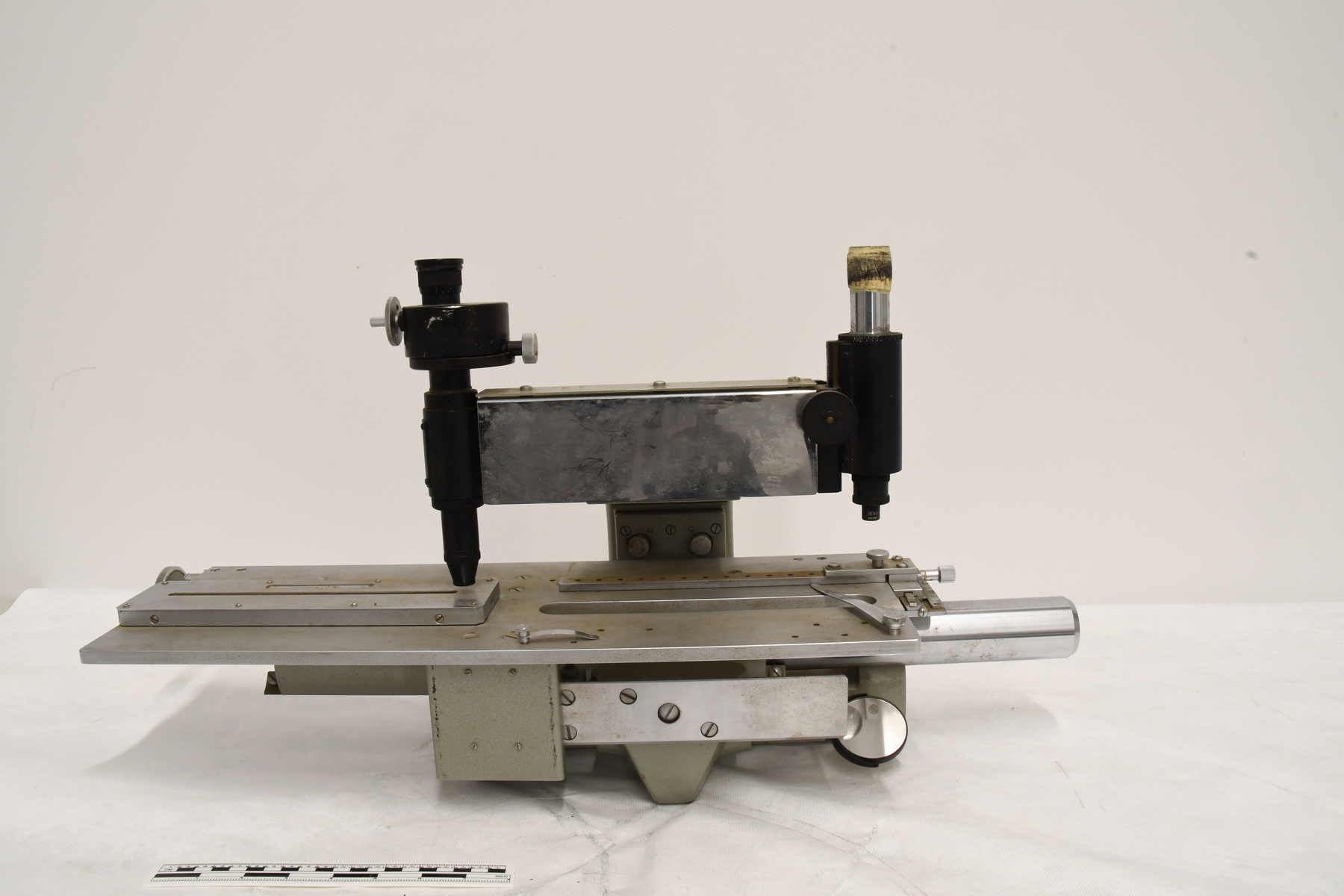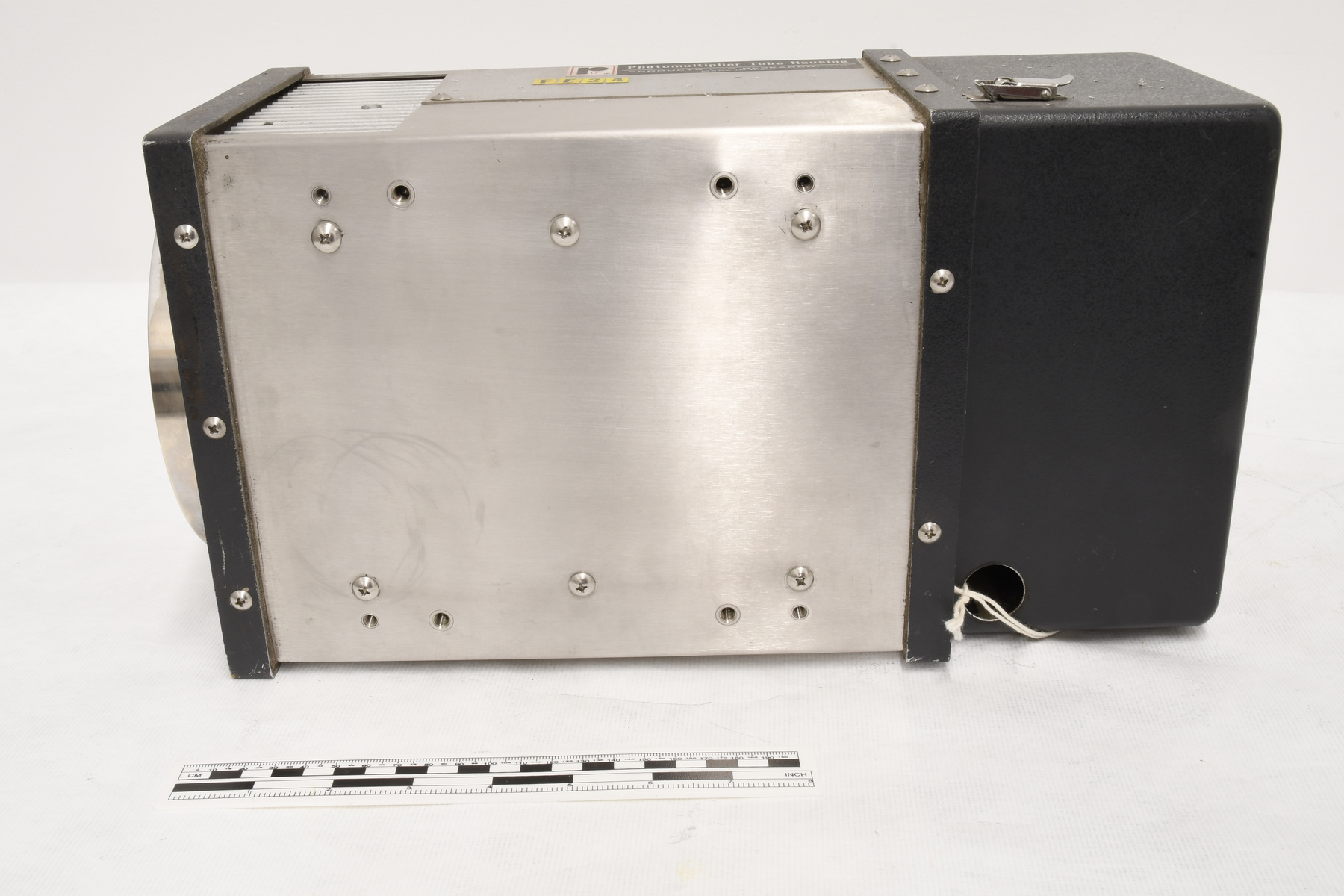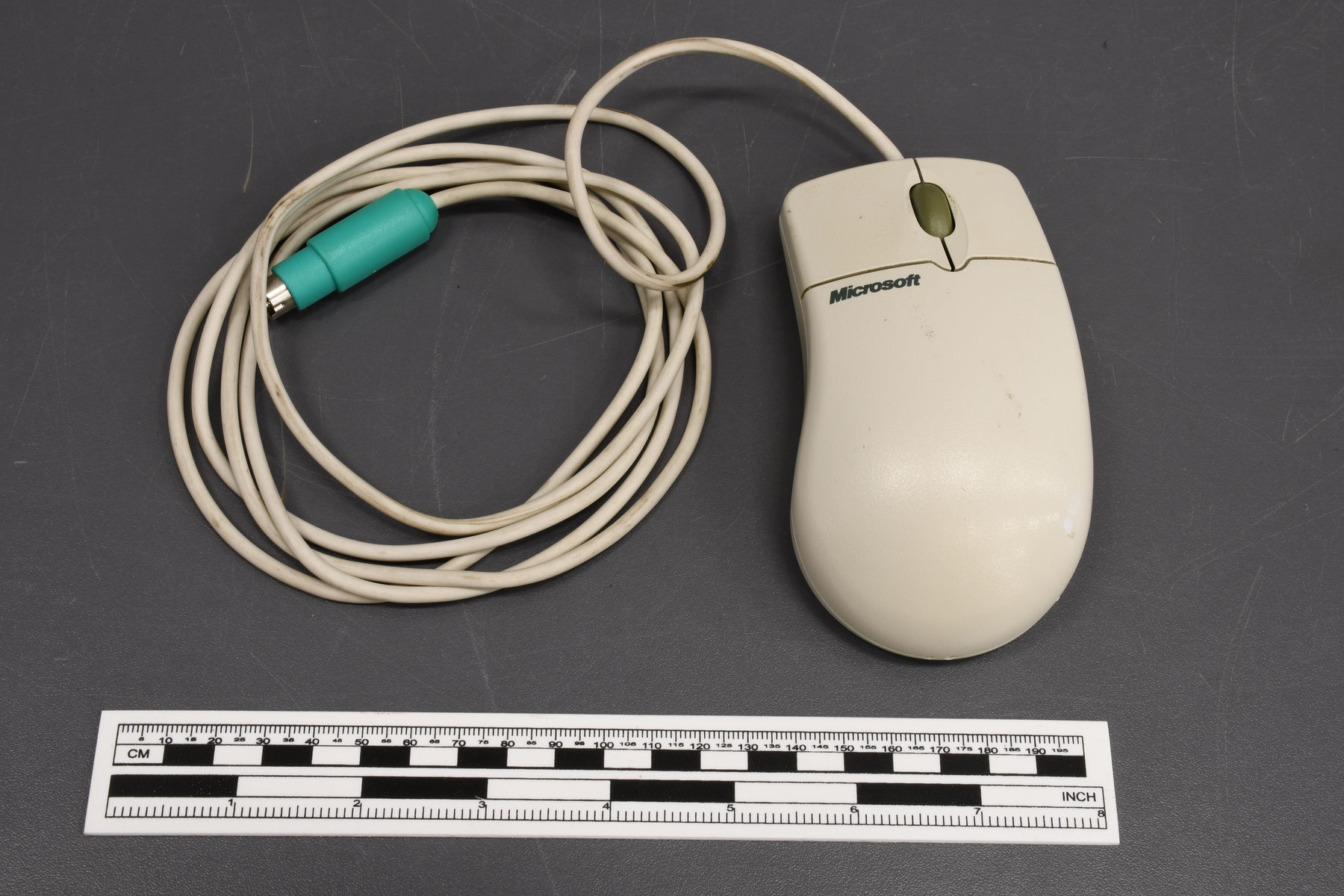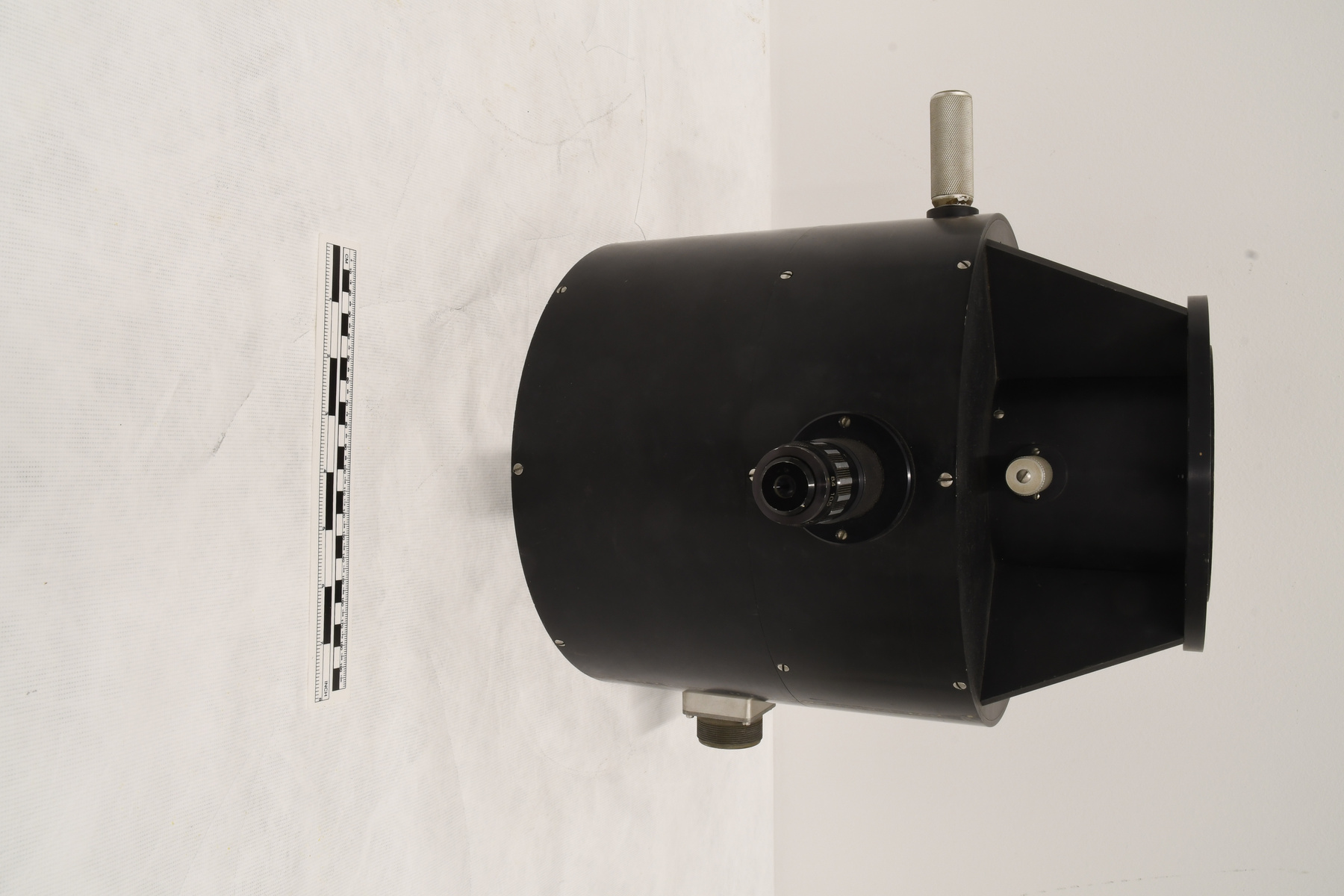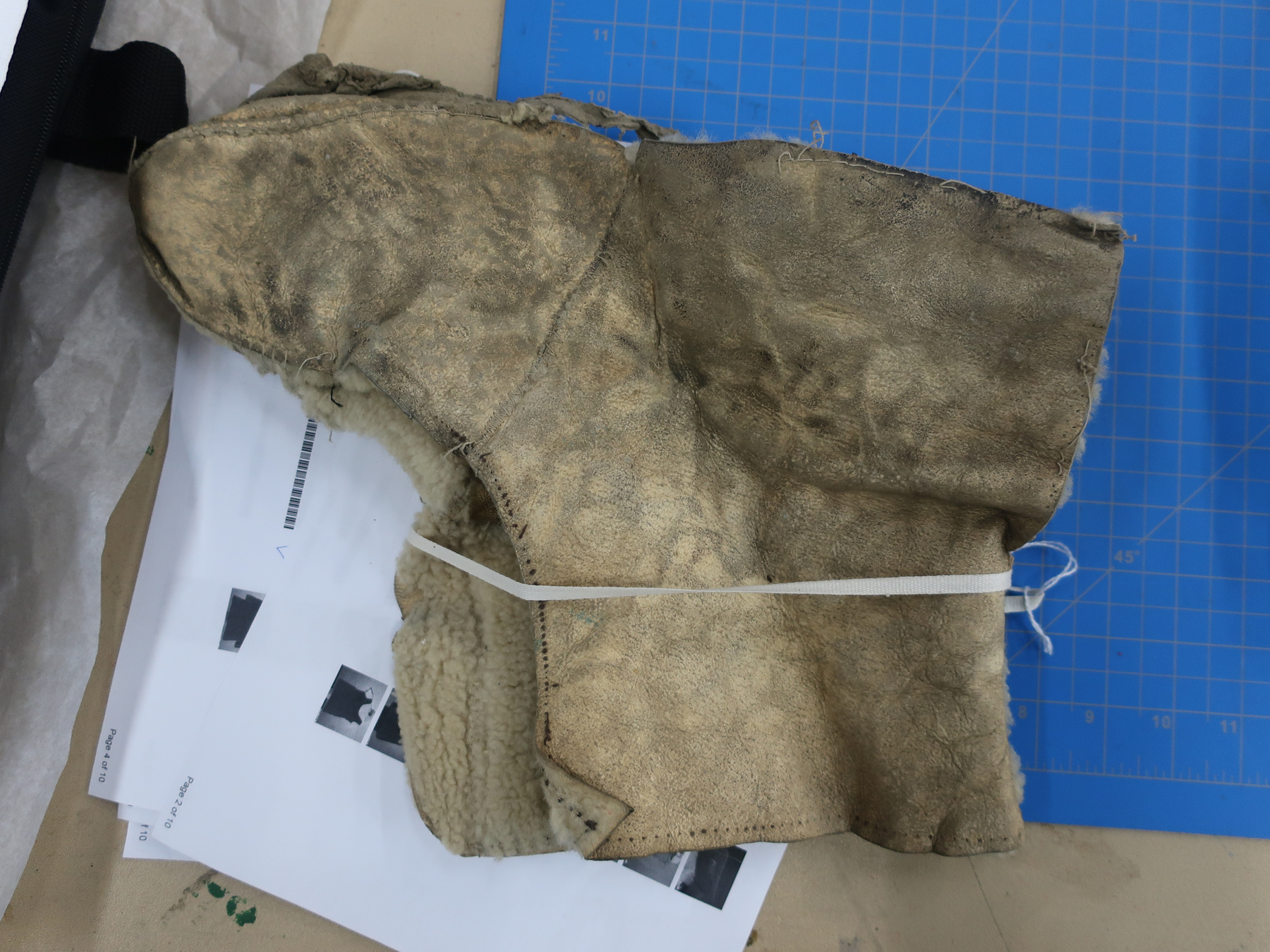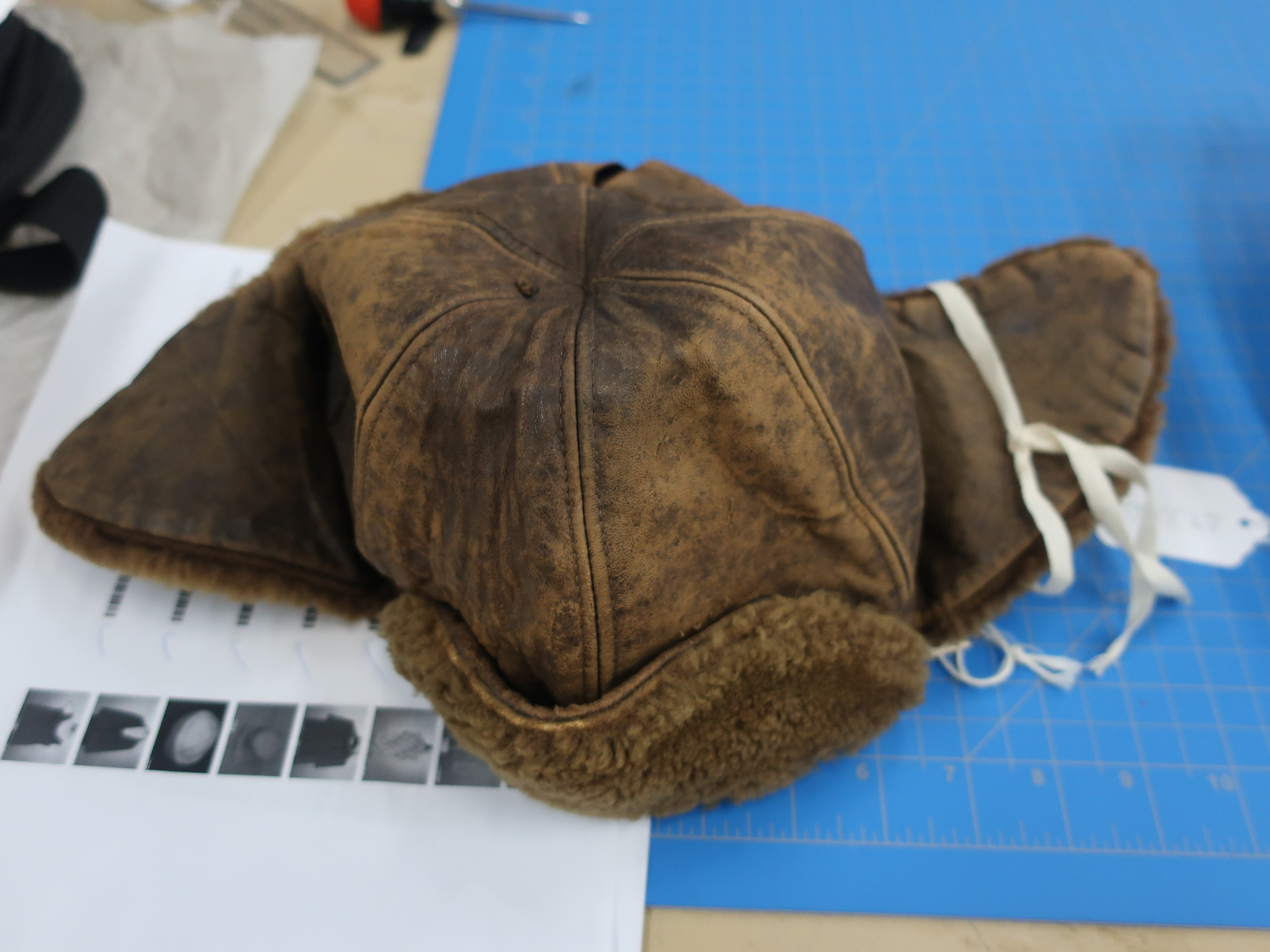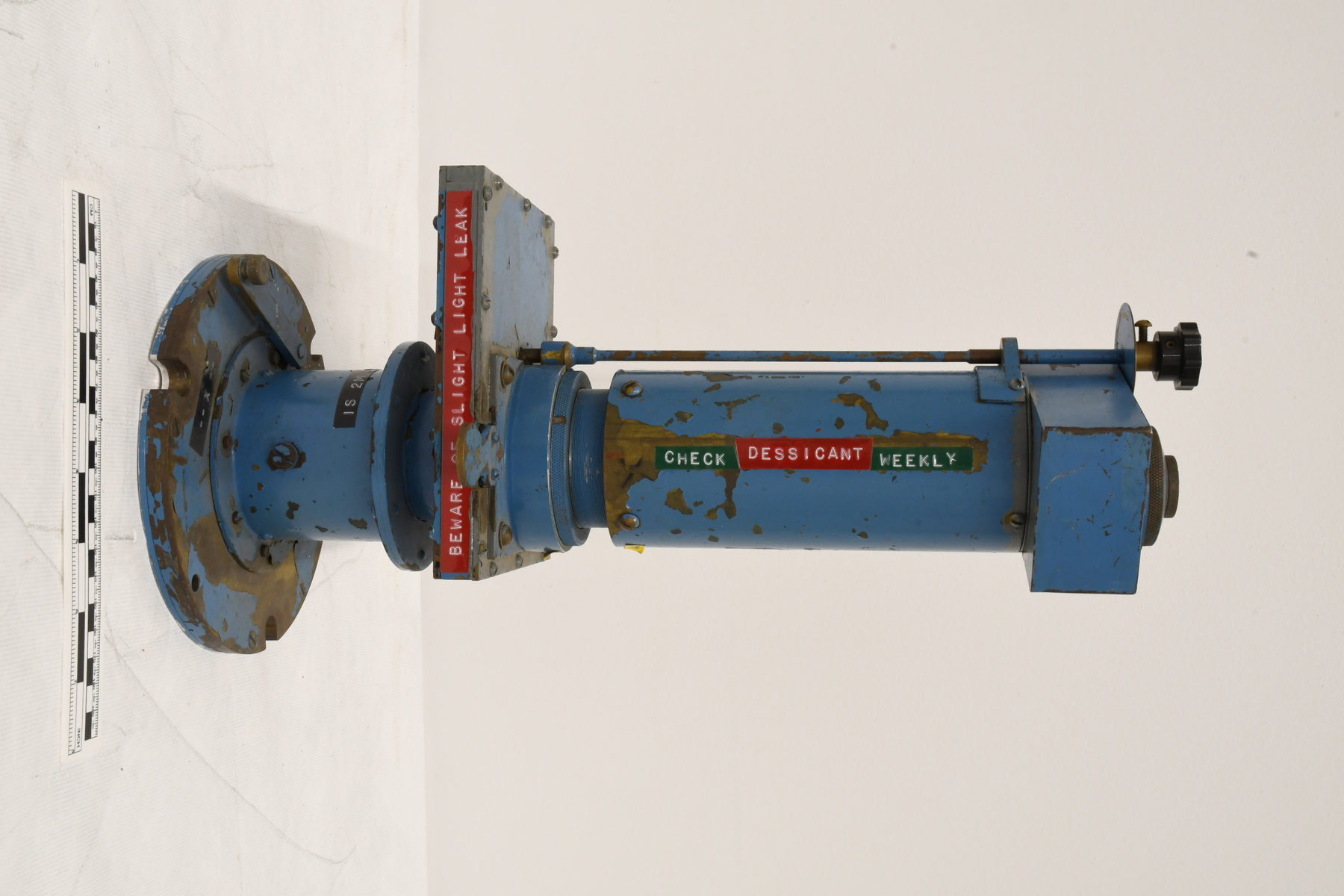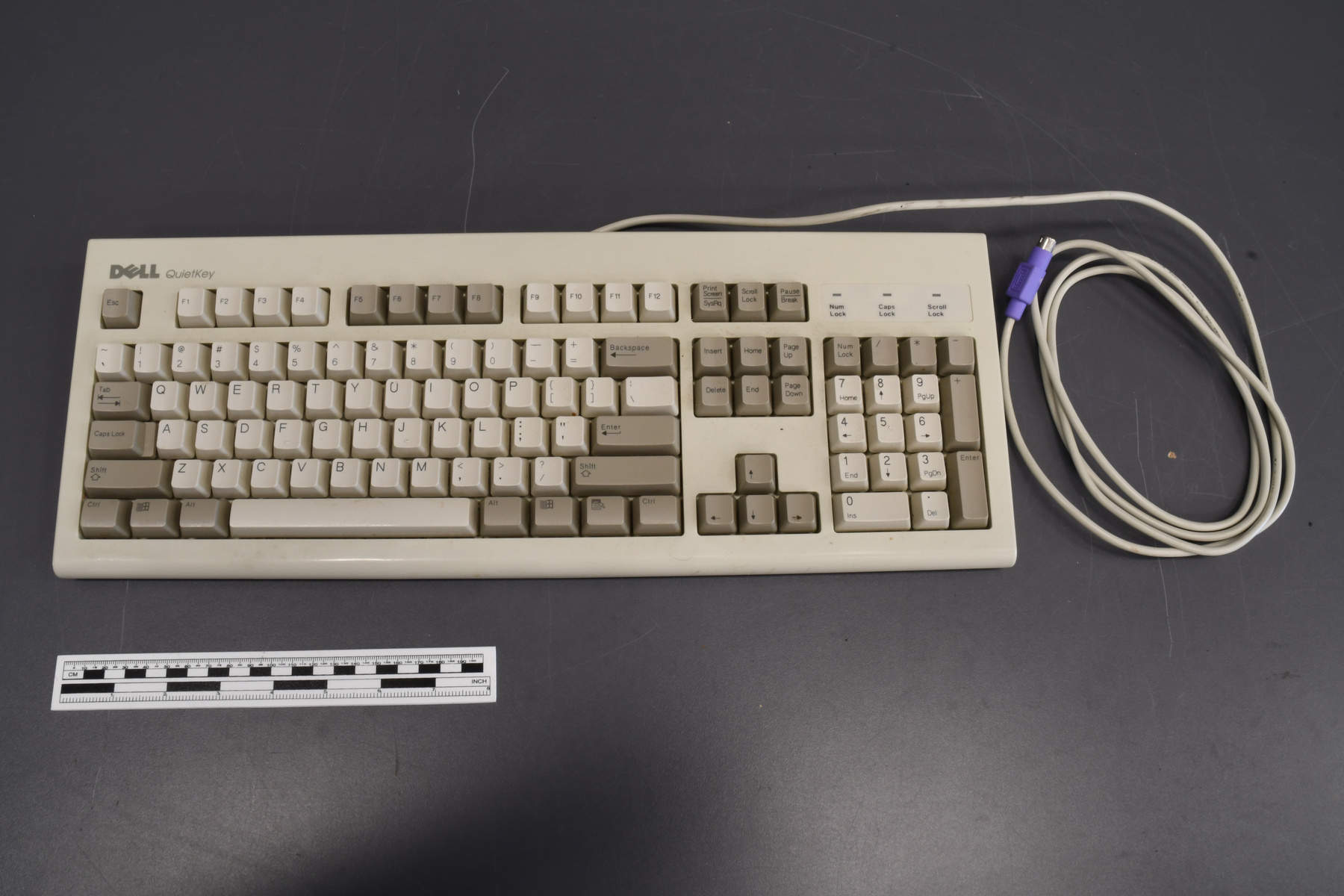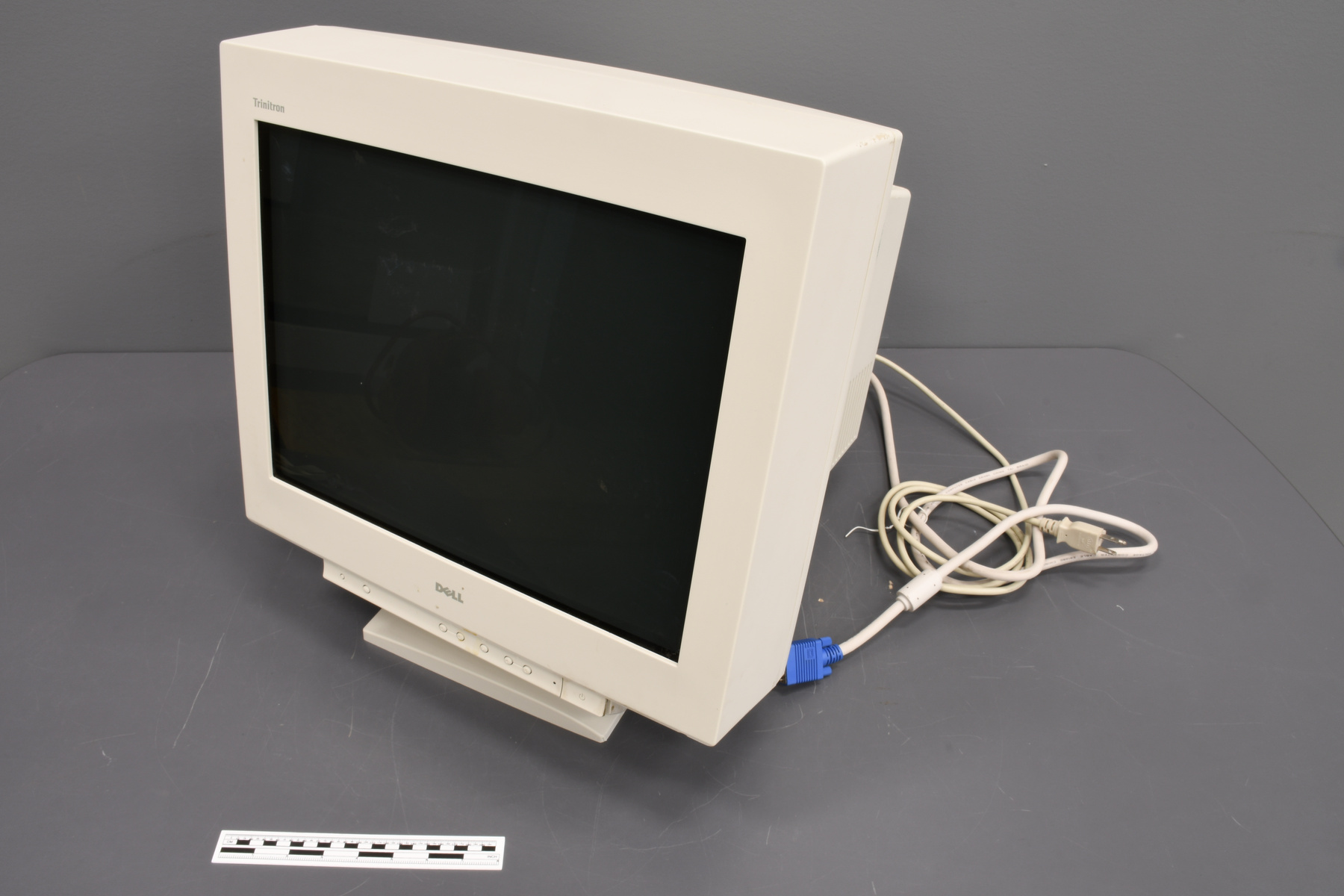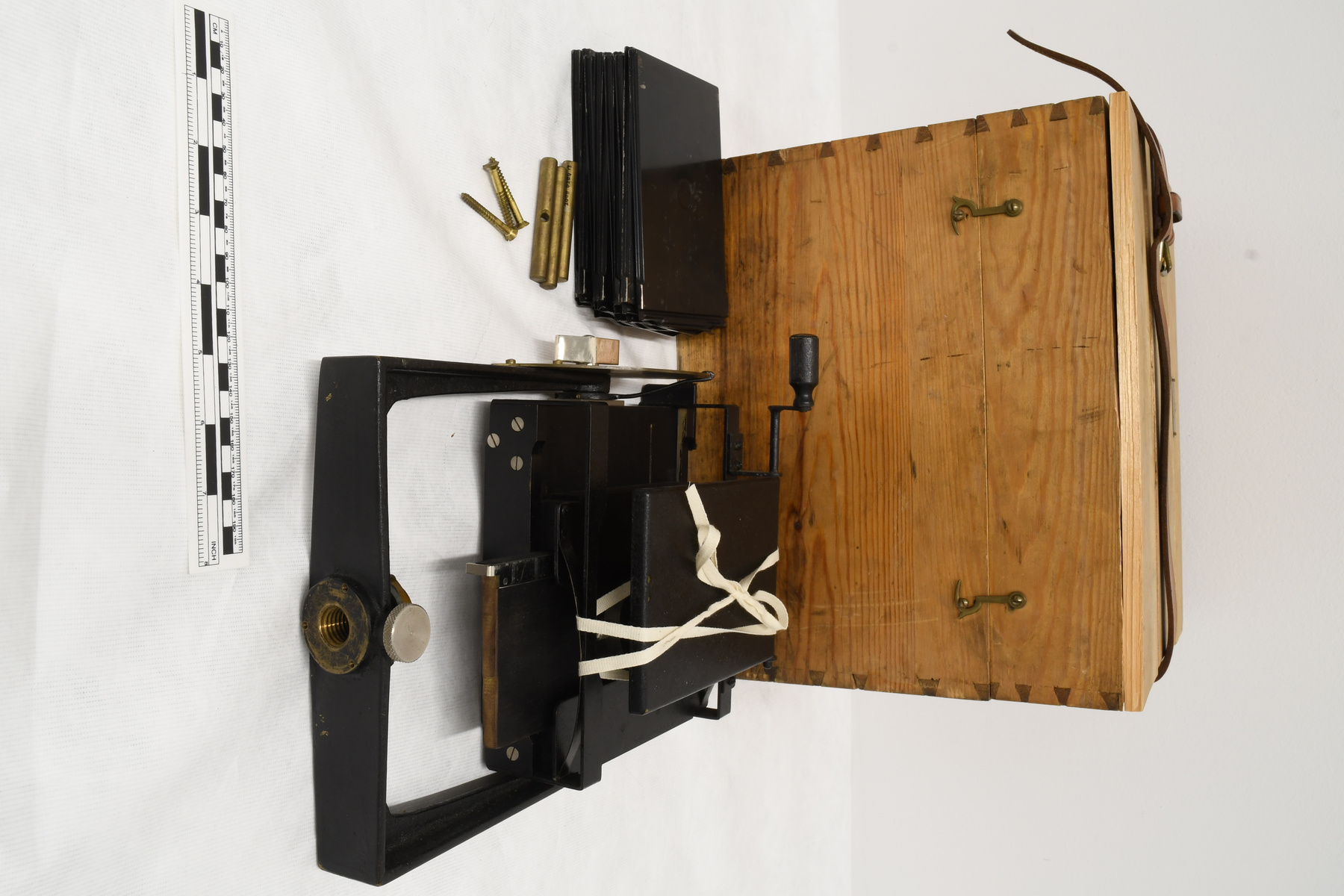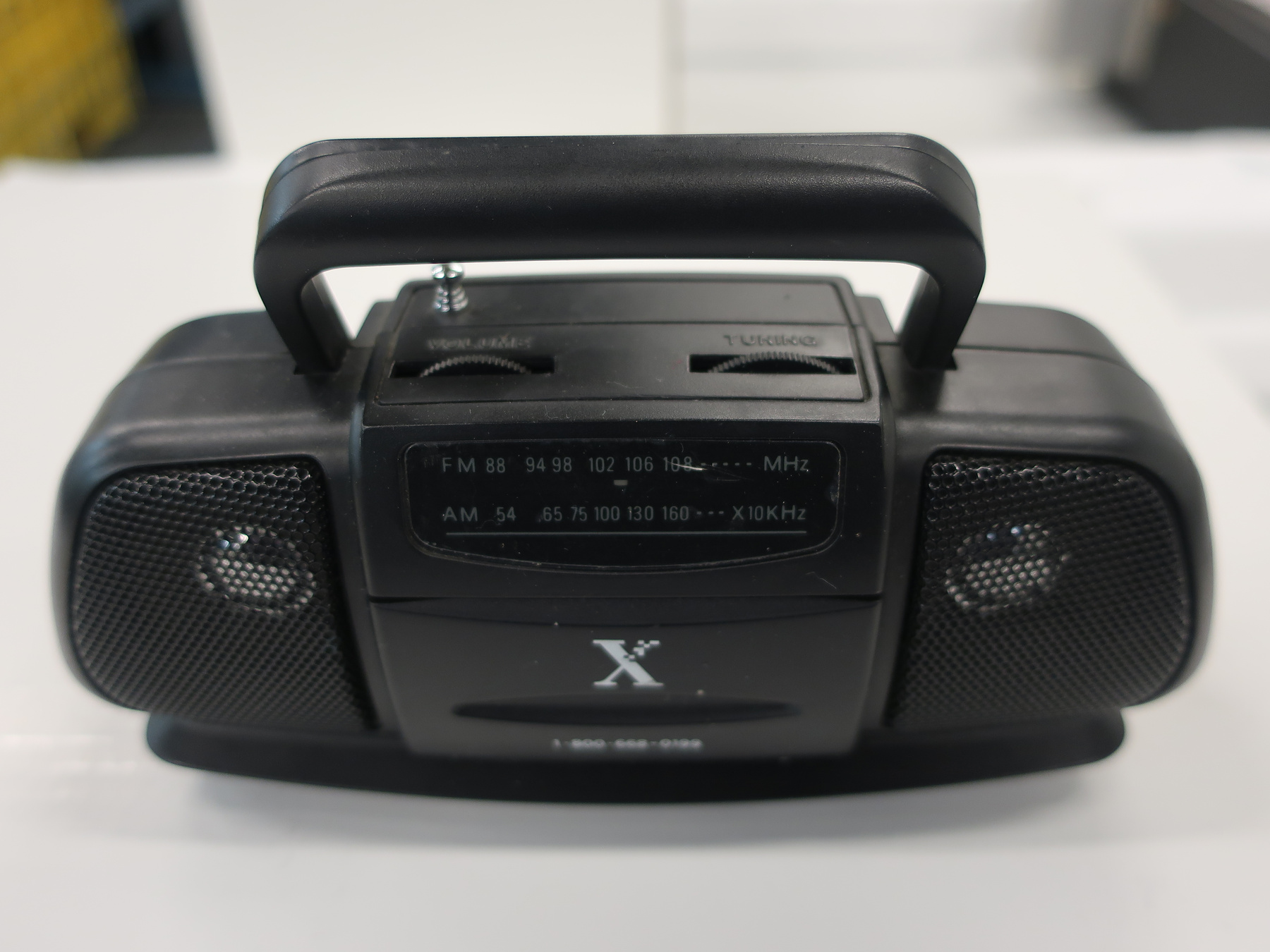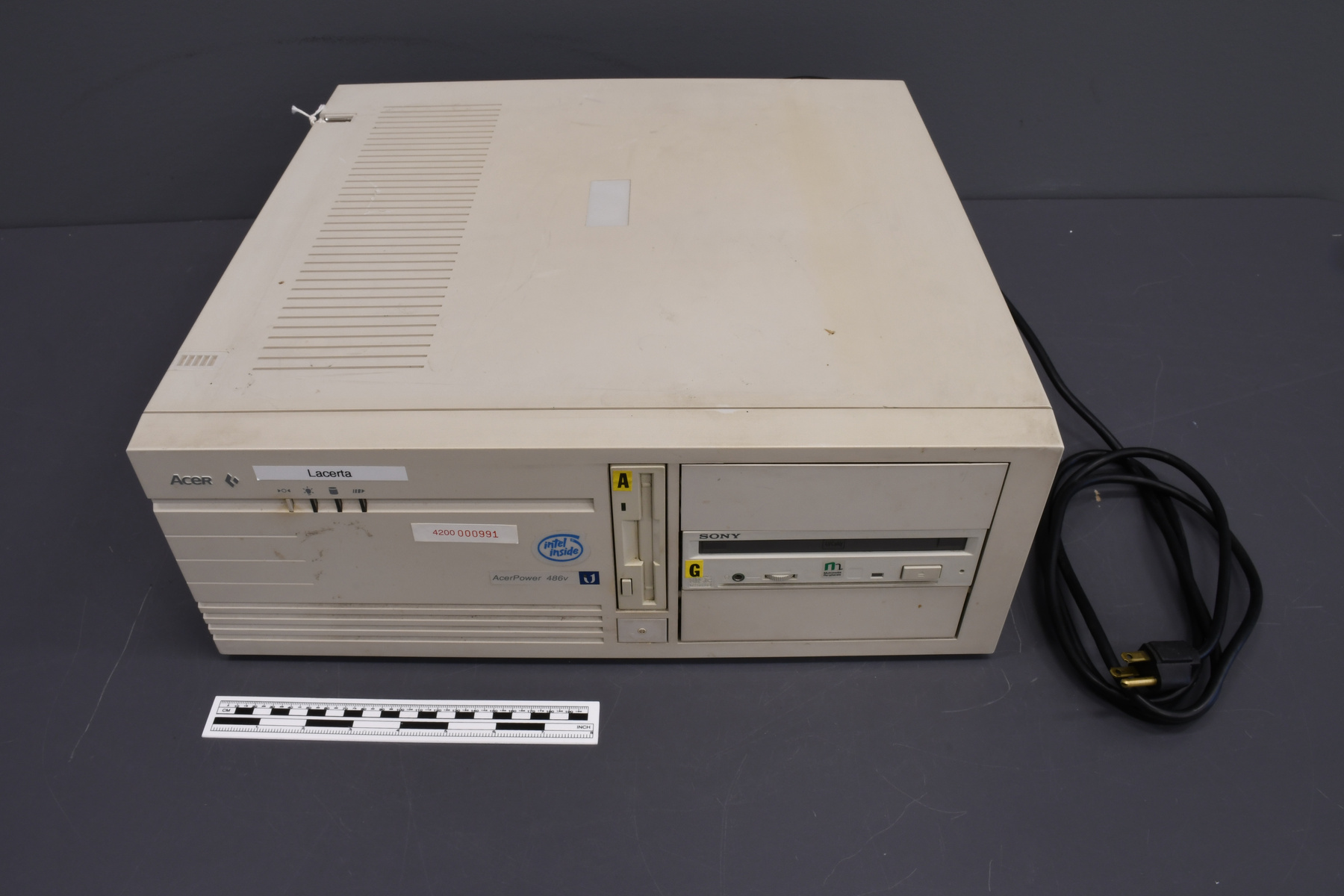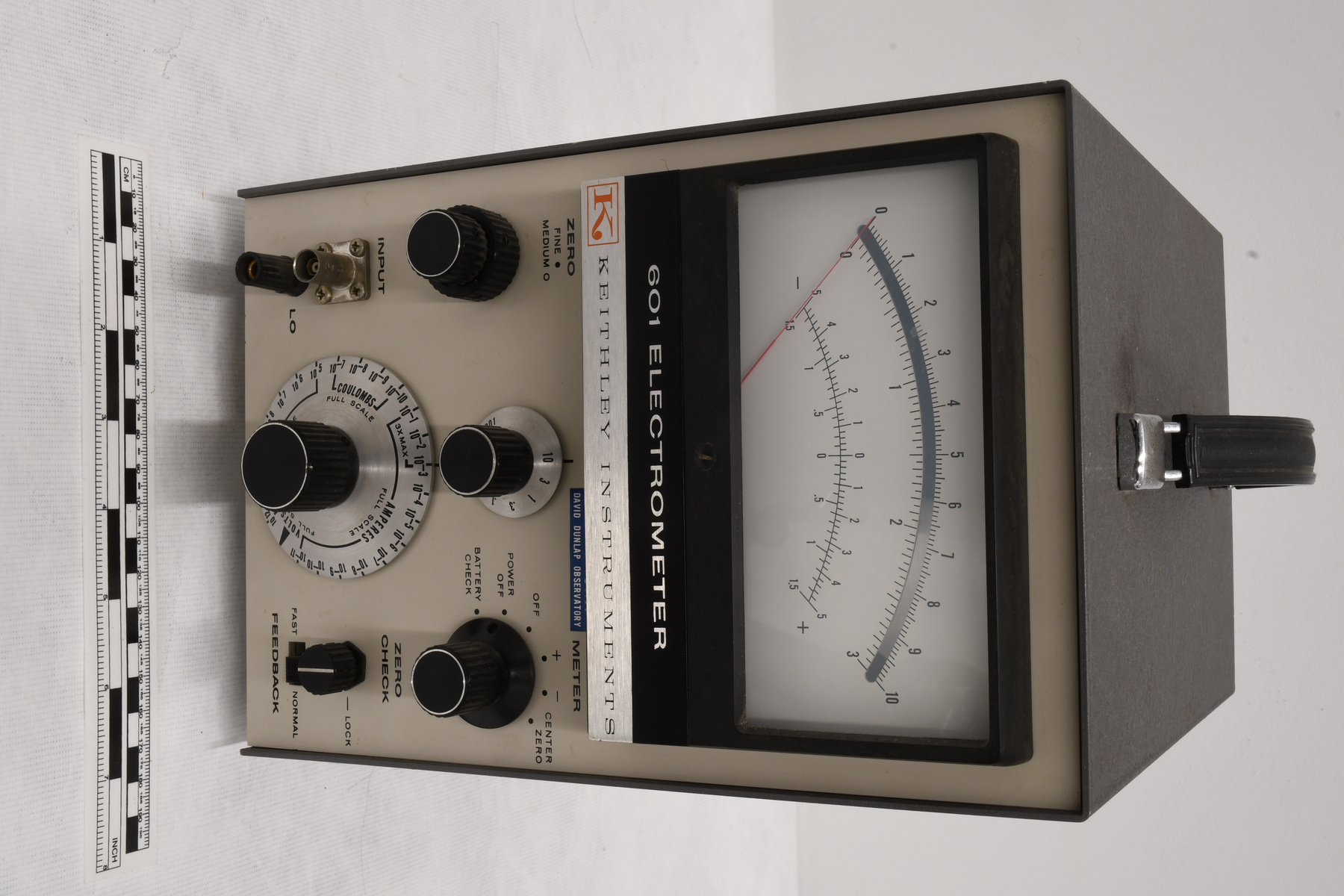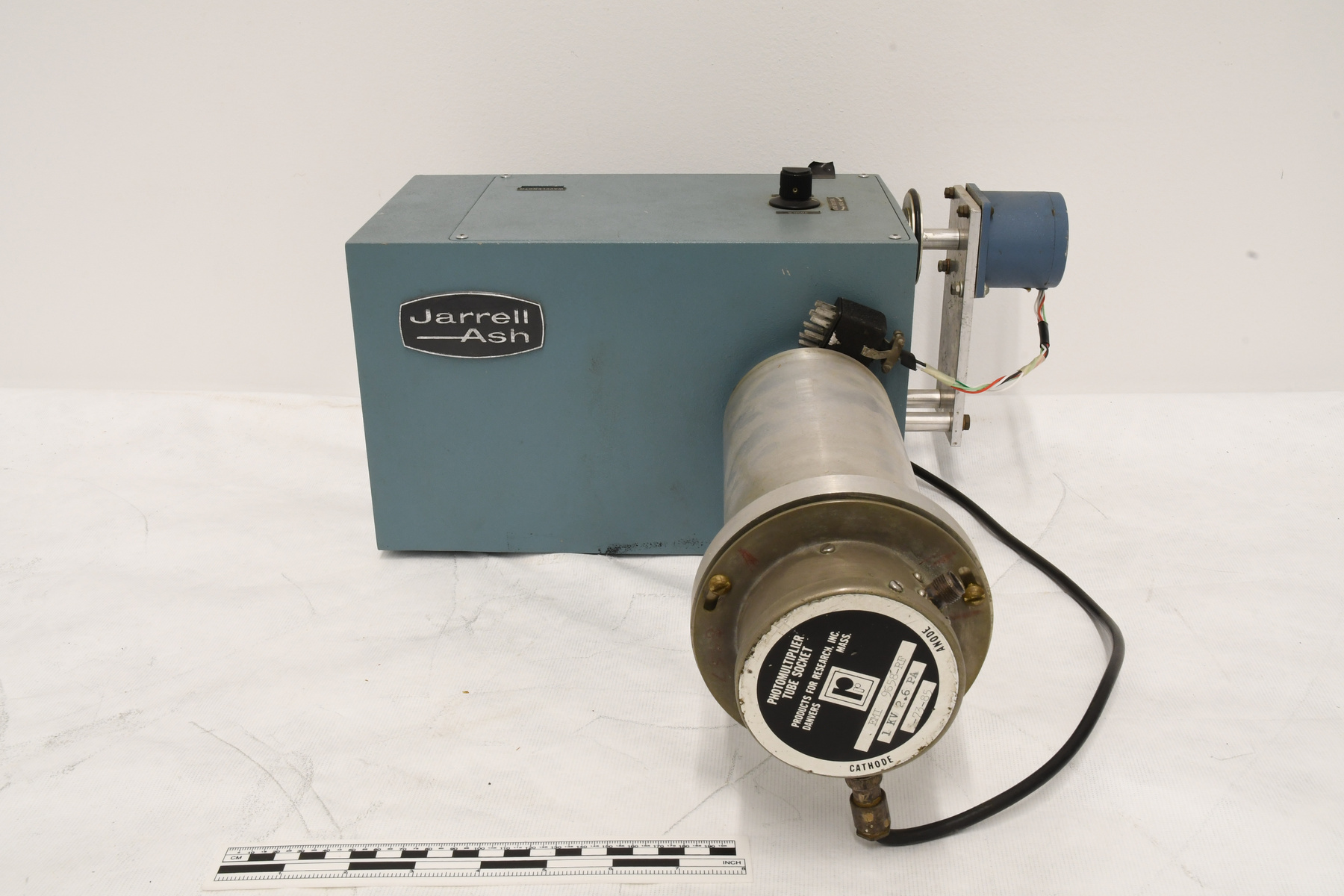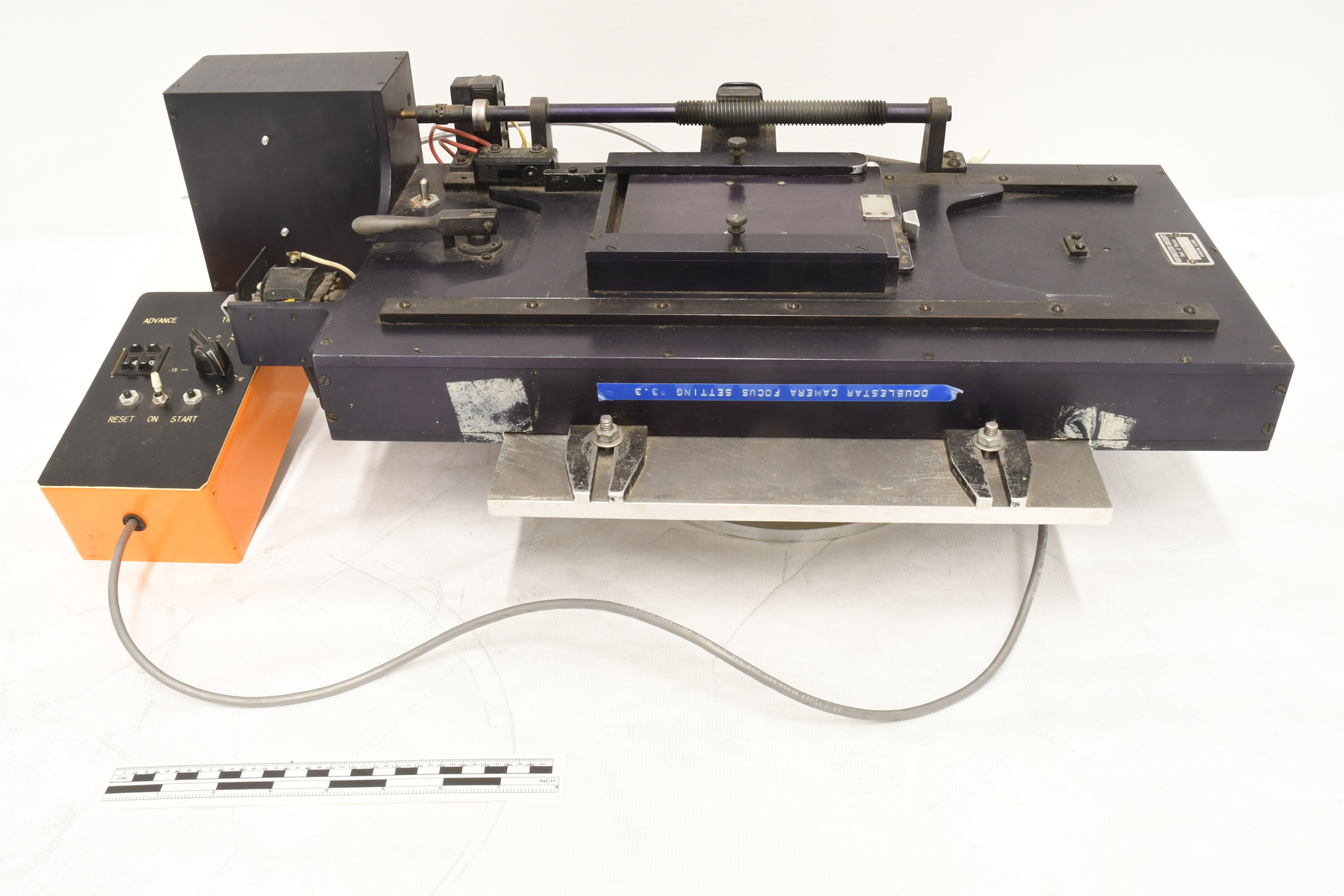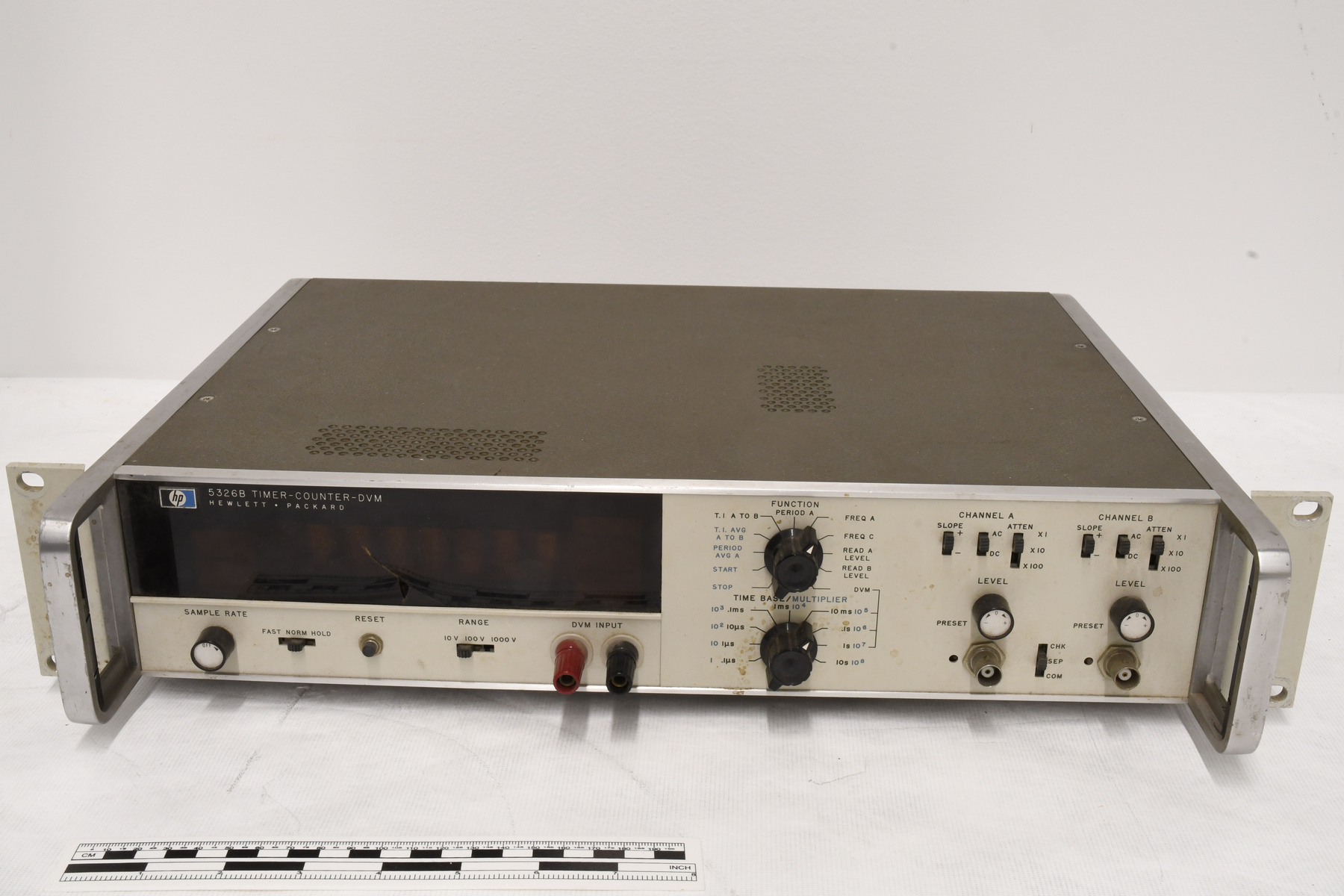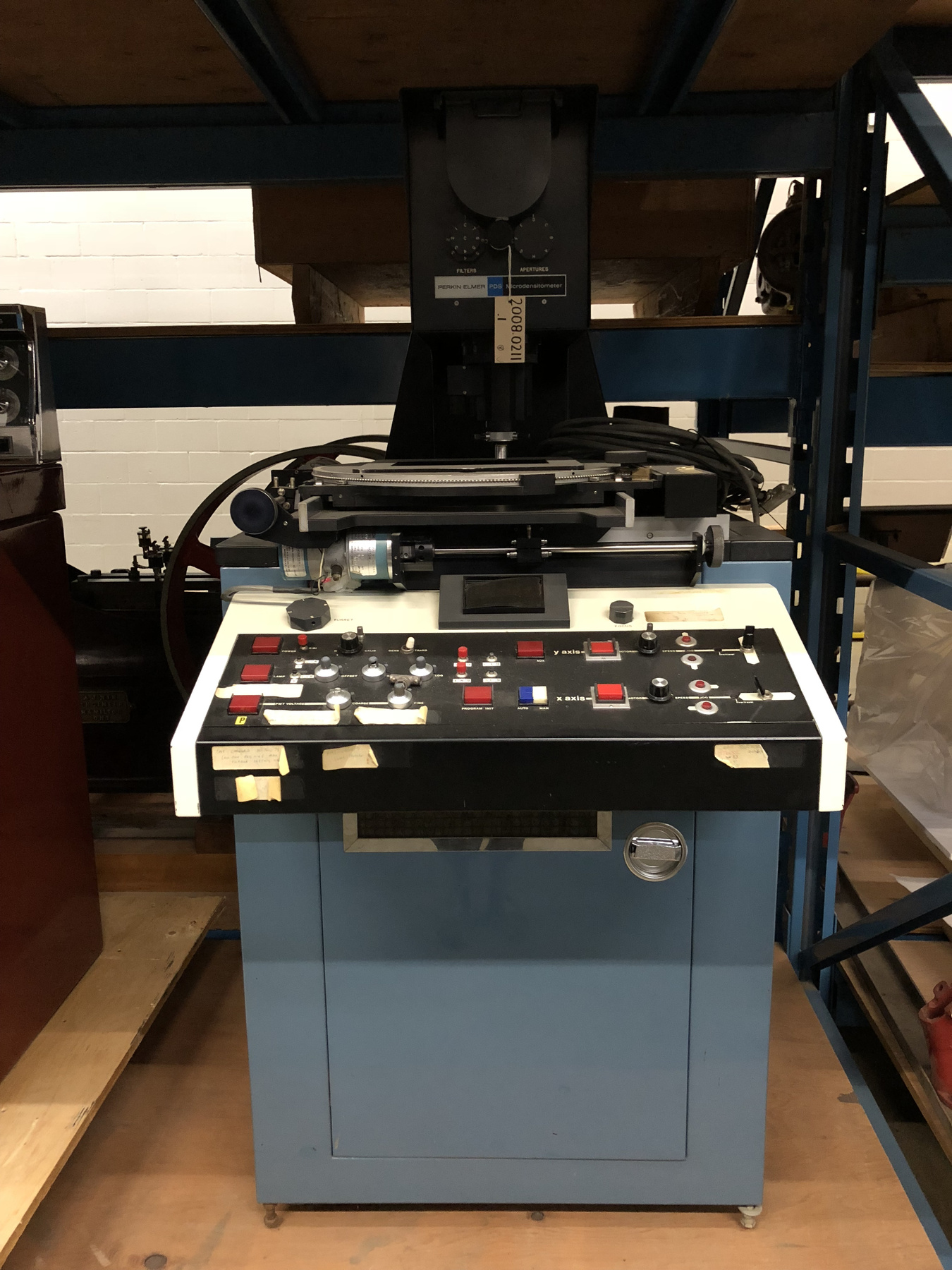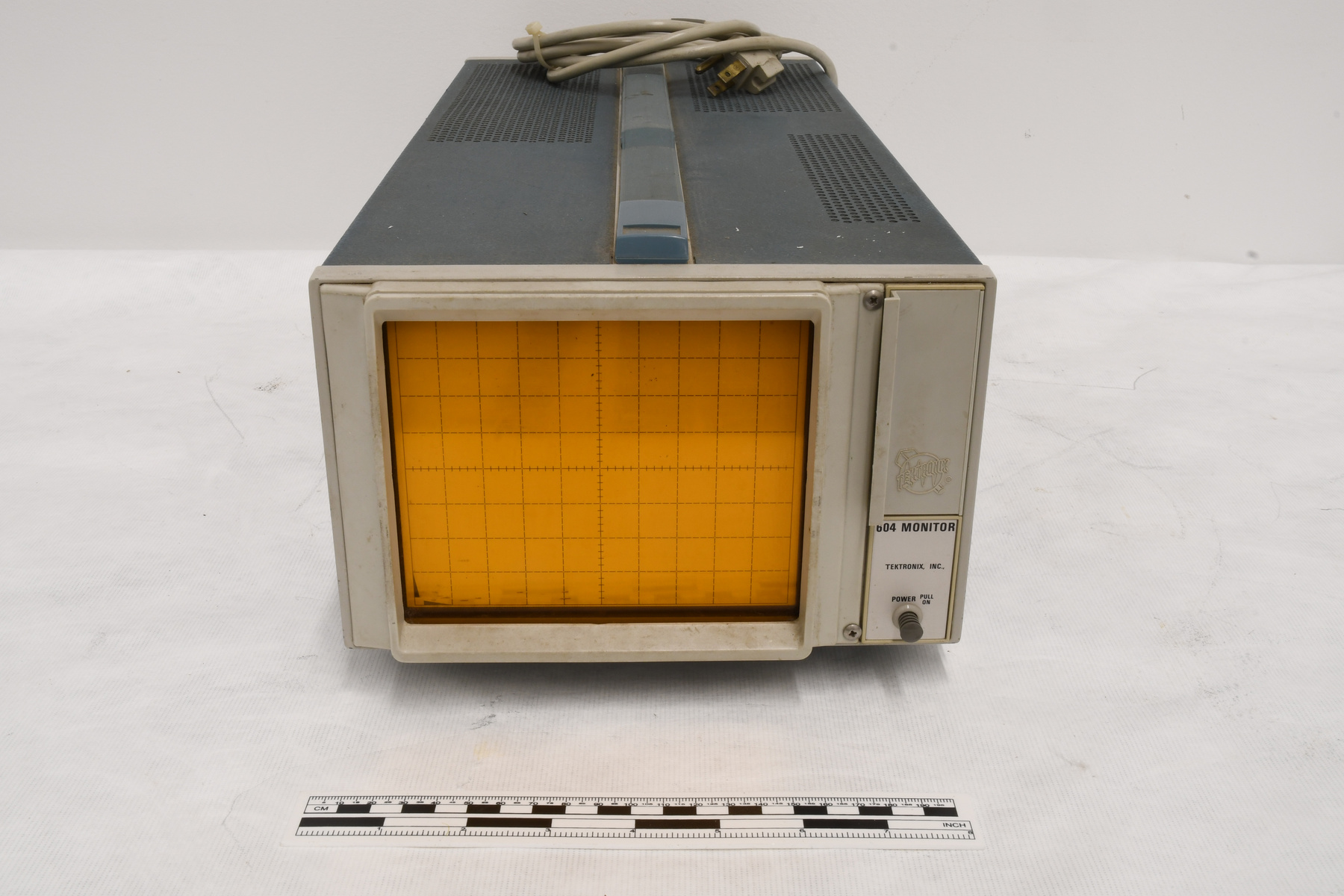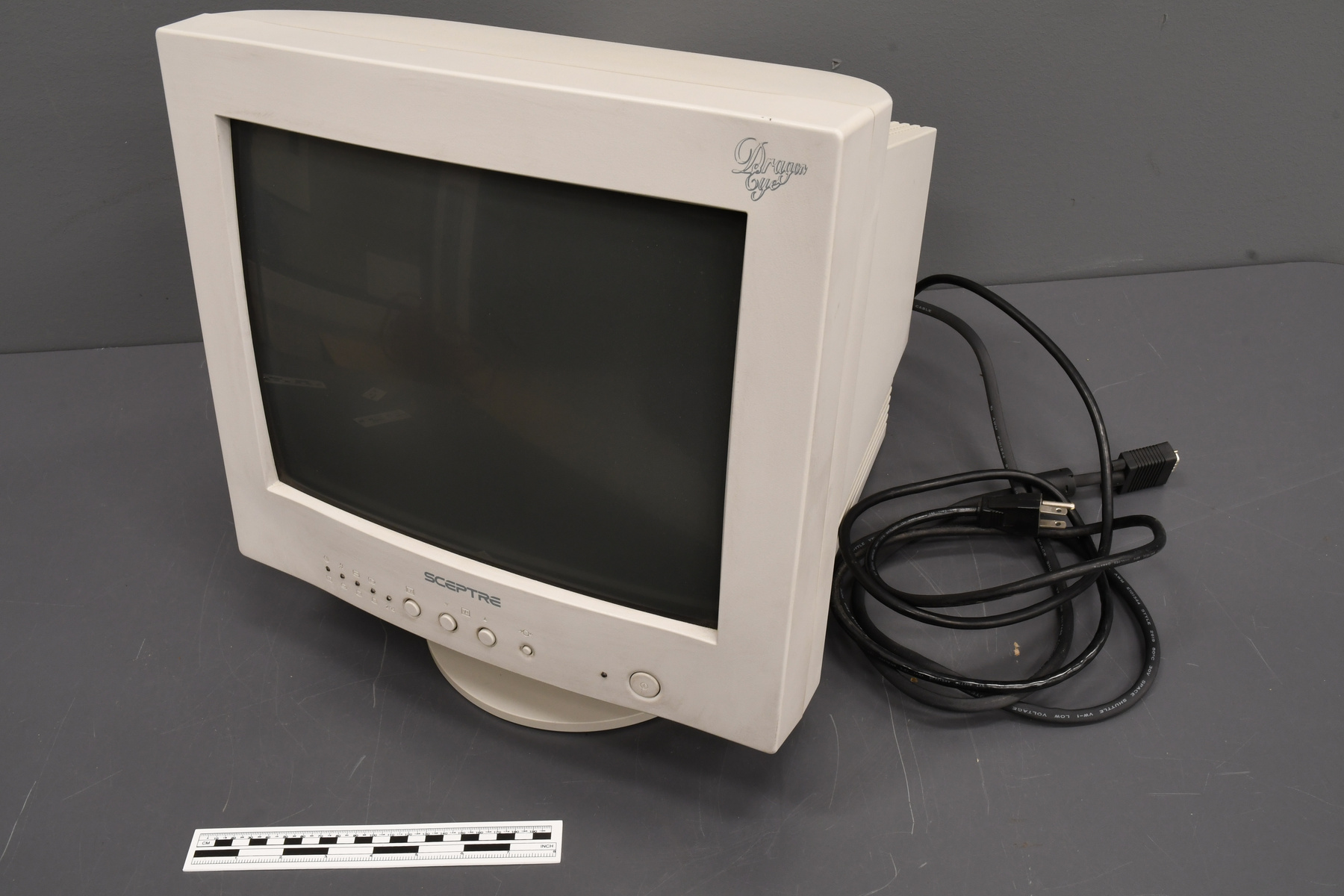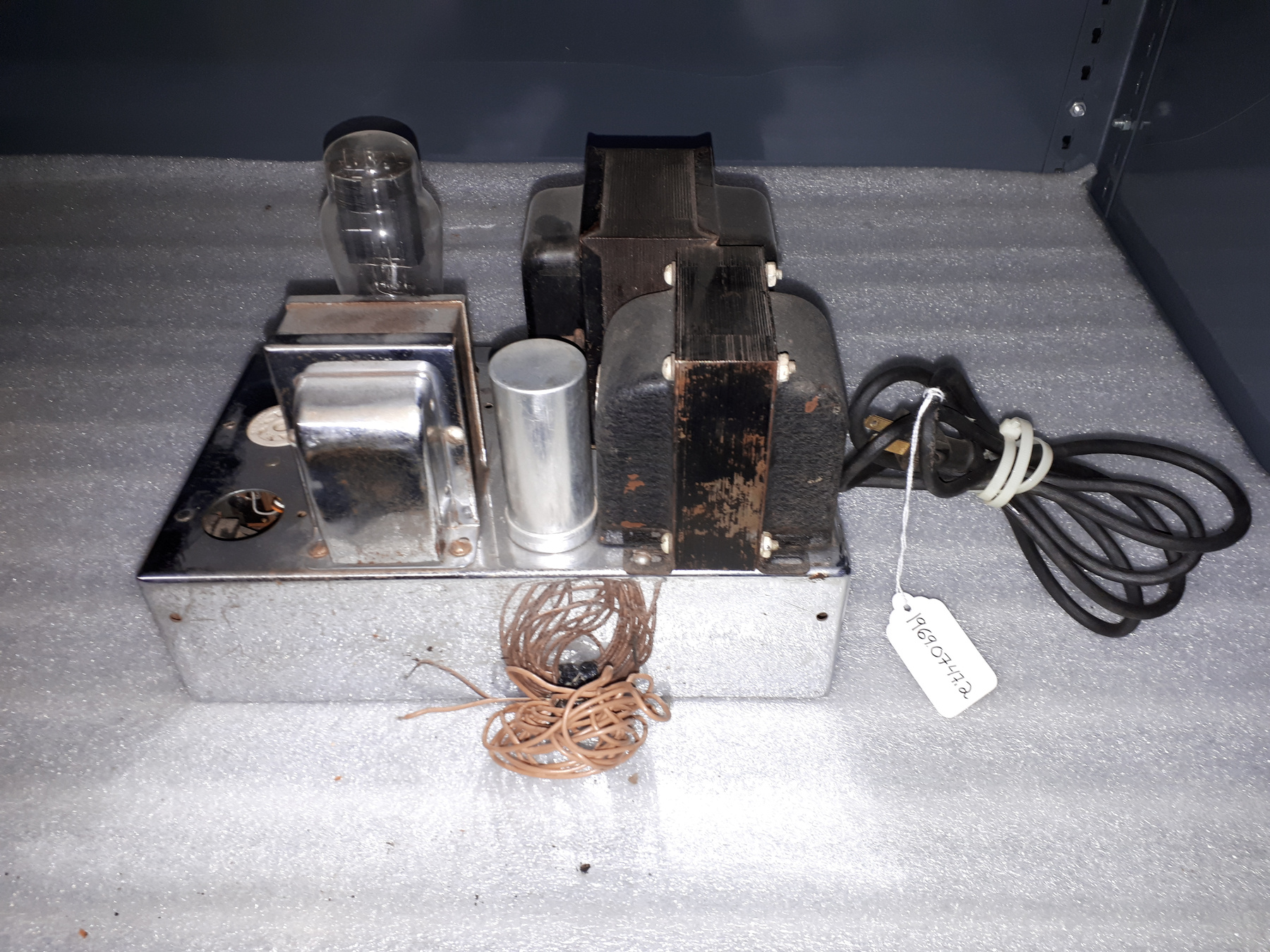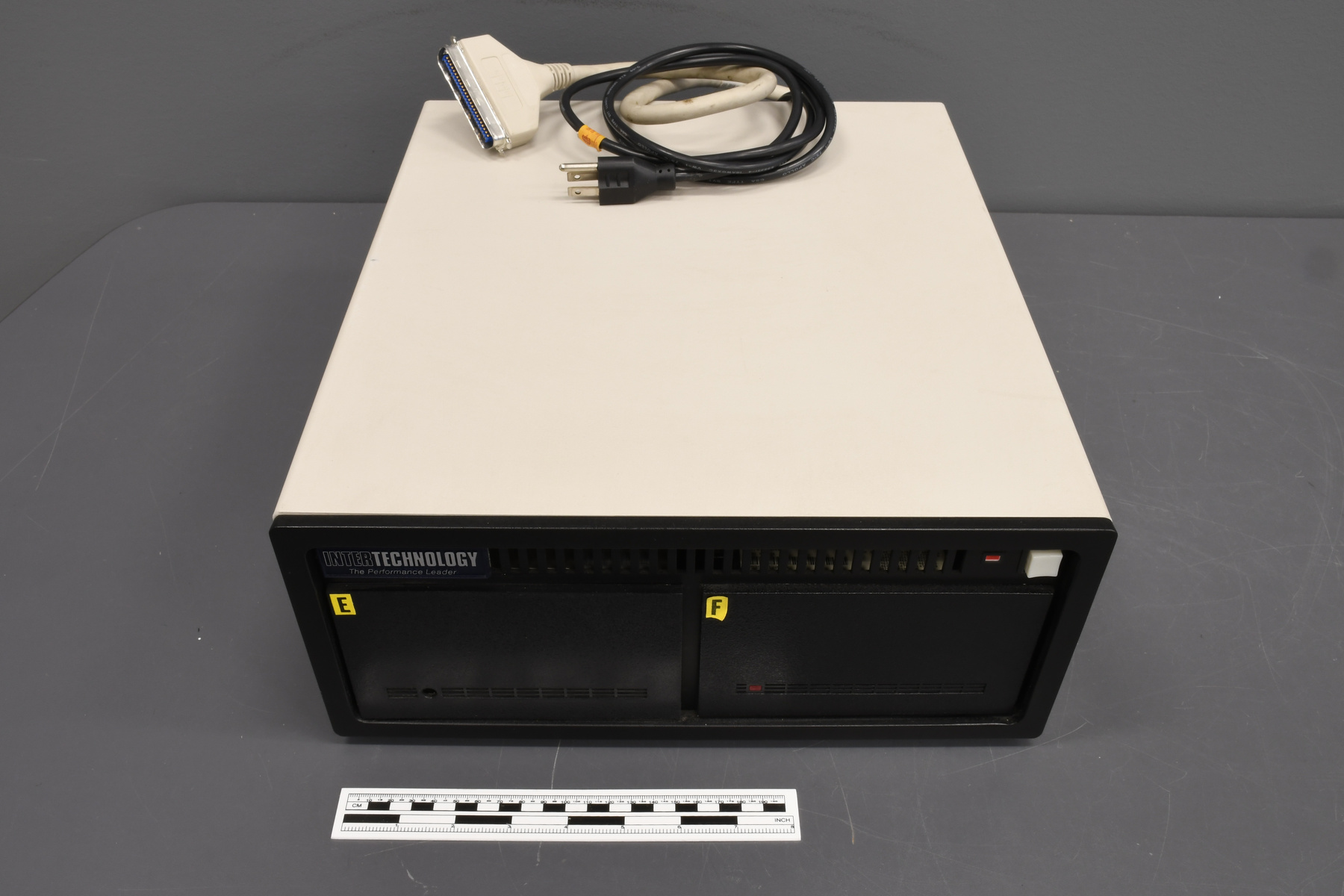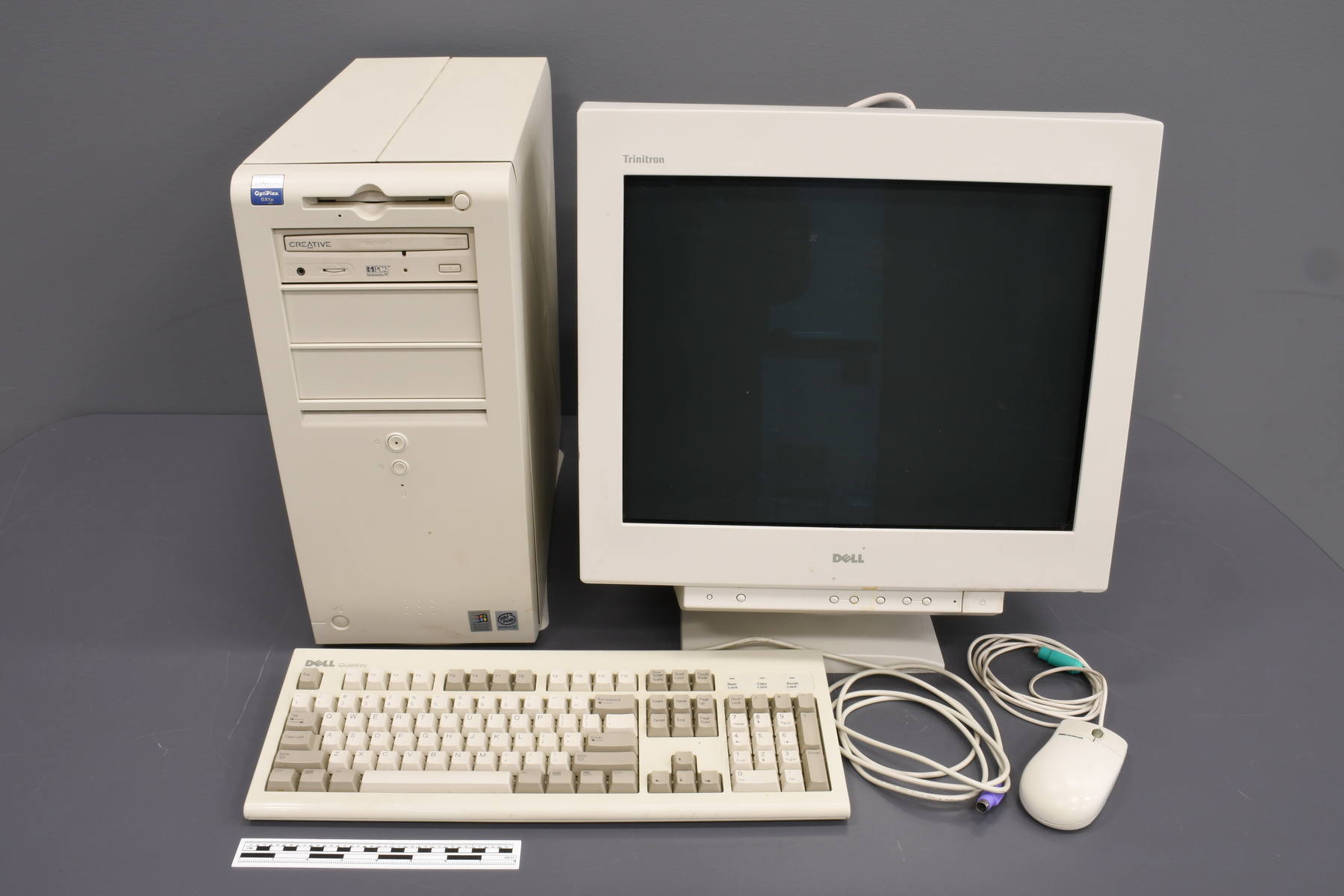Spectrographe
Utiliser cette image
Puis-je réutiliser cette image sans autorisation? Oui
Les images sur le portail de la collection d’Ingenium ont la licence Creative Commons suivante :
Copyright Ingenium / CC BY-NC-ND (Attribution-NonCommercial 4.0 International (CC BY-NC 4.0)
ATTRIBUER CETTE IMAGE
Ingenium,
2008.0189.001
Permalien:
Ingenium diffuse cette image sous le cadre de licence Creative Commons et encourage son téléchargement et sa réutilisation à des fins non commerciales. Veuillez mentionner Ingenium et citer le numéro de l’artefact.
TÉLÉCHARGER L’IMAGEACHETER CETTE IMAGE
Cette image peut être utilisée gratuitement pour des fins non commerciales.
Pour un usage commercial, veuillez consulter nos frais de reproduction et communiquer avec nous pour acheter l’image.
- TYPE D’OBJET
- Echelle
- DATE
- Inconnu
- NUMÉRO DE L’ARTEFACT
- 2008.0189.001
- FABRICANT
- University of Toronto, David Dunlop Observatory
- MODÈLE
- DDO/Echelle
- EMPLACEMENT
- Richmond Hill, Ontario, Canada
Plus d’information
Renseignements généraux
- Nº de série
- S/O
- Nº de partie
- 1
- Nombre total de parties
- 6
- Ou
- S/O
- Brevets
- S/O
- Description générale
- Metal body and parts/ Synthetic cord and wire coverings, parts/ Glass parts
Dimensions
Remarque : Cette information reflète la taille générale pour l’entreposage et ne représente pas nécessairement les véritables dimensions de l’objet.
- Longueur
- 101,0 cm
- Largeur
- 72,0 cm
- Hauteur
- 50,0 cm
- Épaisseur
- S/O
- Poids
- S/O
- Diamètre
- S/O
- Volume
- S/O
Lexique
- Groupe
- Astronomie
- Catégorie
- Équipement d'observation
- Sous-catégorie
- S/O
Fabricant
- Ou
- Inconnu
- Pays
- Canada
- État/province
- Ontario
- Ville
- Richmond Hill
Contexte
- Pays
- Canada
- État/province
- Ontario
- Période
- Inconnu
- Canada
-
An instrument used at the David Dunlap Observatory at the University of Toronto, one of Canada's most important astronomical observatories. The David Dunlap Observatory opened in 1935 as the result of a bequest from the wife of David Dunlap. The telescope was a 74 inch (188 cm) reflector built by Grubb Parsons of Newcastle-upon-Tyne in England. The 74 inch was then the largest telescope in Canada (surpassing the 72 inch telescope of the Dominion Astrophysical Observatory in Victoria) and became the second largest in the world after the 100 inch Hooker Telescope of the Mt. Wilson Observatory outside Los Angeles. DDO's reputation grew and following WWII, it began to graduate most of the astronomers produced in Canada with University of Western Ontario far behind. Beginning in the 1960s a number of other astronomy departments were created but UofT/DDO held its place, a position it probably still holds. The DDO had a good technical staff which gave them an advantage and, with most of the 1940s to early 1970s top astronomers coming from UofT, grants from NRC and then ENSERC were almost guaranteed and allowed UofT's top astronomers -- Hogg, van den Berg, Fernie, Bolton, Kamper, Martin, etc. to acquire or build some of the best equipment available in university observatories. For optical observatories, only the DAO had technical staff and budgets that surpassed those of DDO. In 2007, citing increasing light pollution, the University of Toronto announced plans to sell the Observatory property. In June 2008, it was sold to Corsica Development Inc., a subsidiary of Metrus Development Inc. and the Observatory was closed. In 2009 the Observatory buildings and 80% of the site were designated a cultural heritage landscape. Also in 2009 Corsica and the Royal Astronomical Society of Canada, Toronto Centre announced an agreement allowing the RASC to provide public education and outreach programs at the observatory, and to operate the 188 cm telescope. - Fonction
-
An astronomical instrument used to took images of stellar spectra. - Technique
-
Designed by Dr. John Lester, this was used mounted on the side of the 74" and took images of stellar spectra using a CCD detector (now defunct but in the instrument). Generally, an echelle spectrograph is a spectrograph that uses an échelle grating to achieve high spectral resolution and wide wavelength coverage. The overlapping spectra produced by the grating are separated by a prism or a grism before reaching the detector. The sensitivity brought to modern échelle spectrographs by CCD detectors has made them indispensable in such fields as astroseismology and extrasolar planet searches (Ref. 3). - Notes sur la région
-
Inconnu
Détails
- Marques
- Black and silver label on photomultiplier tube housing reads 'Photomultiplier Tube Housing/ PRODUCTS FOR RESEARCH, INC./ MADE IN U.S.A.'/ Black and silver label inside photomultiplier tube housing reads 'PHOTOMULTIPLIER TUBE SOCKET/ PRODUCTS FOR RESEARCH, INC./ DANVERS MASS./ Made in U.S.A./ 9658-81/ 6410-80/ RF TSA/ CATHODE ANODE'
- Manque
- Unknown
- Fini
- Flat black painted body/ Textured blue painted CCD detector casing/ Metallic grey photomultiplier tube housing/ Black and grey synthetic cord and wire coverings/ Black painted metal bars/ Colourless transparent glass/ Metallic parts
- Décoration
- S/O
FAIRE RÉFÉRENCE À CET OBJET
Si vous souhaitez publier de l’information sur cet objet de collection, veuillez indiquer ce qui suit :
University of Toronto, David Dunlop Observatory, Spectrographe, Date inconnue, Numéro de l'artefact 2008.0189, Ingenium - Musées des sciences et de l'innovation du Canada, http://collections.ingeniumcanada.org/fr/id/2008.0189.001/
RÉTROACTION
Envoyer une question ou un commentaire sur cet artefact.
Plus comme ceci







